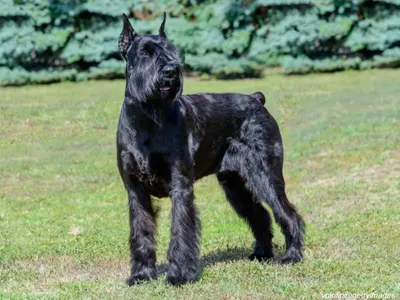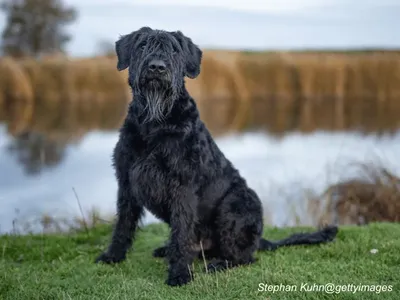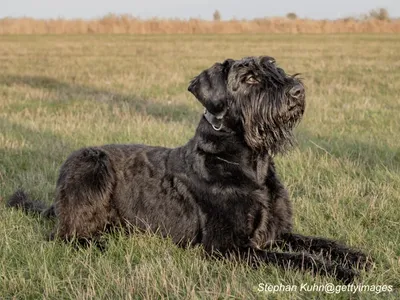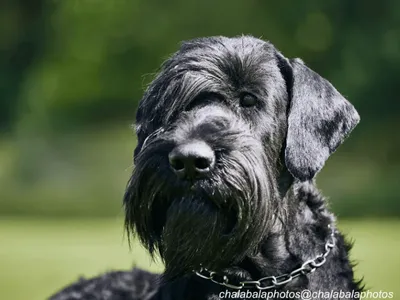Origin & History
The Giant Schnauzer originated in the Bavarian Alps of Germany in the 17th century as a versatile farm dog, originally used to drive cattle and guard farms. Developed from smaller Standard Schnauzers crossed with larger working breeds like Great Danes and Bouvier des Flandres, they were bred to drive cattle to market, guard farms, and serve as all-purpose working dogs.
In the early 20th century, their intelligence and strength made them popular as police and military dogs in Germany. Today, Giant Schnauzers excel in various roles including police work, search and rescue, competitive obedience, and as loyal family companions.
With their distinctive beard and eyebrows, powerful build, and keen intelligence, Giant Schnauzers remain one of the most capable working breeds while forming deep bonds with their families.
Stats:
- Height: 24-28 inches
- Weight: 55-95 pounds
- Coat: Double coat with wiry outer layer and soft undercoat
- Colors: Solid black or salt-and-pepper
- Lifespan: 10-13 years
| Traits: | 1 | 2 | 3 | 4 | 5 |
|---|---|---|---|---|---|
| Energy: Very high; needs vigorous daily exercise and mental stimulation | ✓ | ||||
| Easy To Train: Highly intelligent but independent, often testing boundaries | ✓ | ||||
| Grooming: High maintenance; requires regular brushing and professional hand-stripping | ✓ | ||||
| Family Dog: Loyal and protective with family; best with older children | ✓ | ||||
| Watchdog: Excellent natural guardian; highly protective | ✓ | ||||
| Beginner Friendly: Not recommended for first-time owners | ✓ | ||||
| Prey Drive: High; may chase small animals | ✓ | ||||
| Barking: Moderate; will alert to potential threats | ✓ | ||||
| Good with other dogs: May show dominance or aggression toward dogs of the same sex | ✓ |
Health Concerns:
- Hip Dysplasia: Common in large breeds
- Elbow Dysplasia: Joint development abnormality
- Eye Conditions: Including progressive retinal atrophy and cataracts
- Autoimmune Thyroiditis: Thyroid gland disorder
Please check the Canine Health Information Center (CHIC) and parent breed clubs for health information.
Glossary of general canine health conditions.



